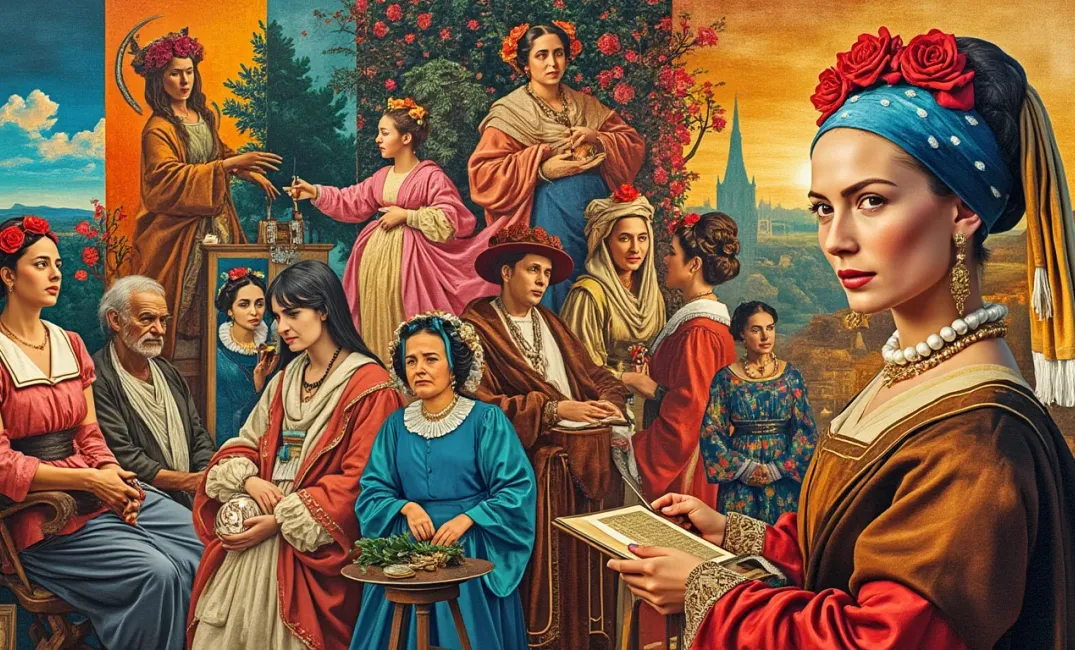Introduction: The Power of Renewal
Human history is marked by periods of profound creativity and cultural rebirth, where communities strive to reflect, reinterpret, and reimagine their world through artistic expression. These epochs, known as renaissances, are more than mere recollections of bygone eras; they symbolize humanity’s innate desire for evolution, innovation, and transcendence. Today's exploration takes us through history's most stirring renaissances, illuminating how these periods of artistic and intellectual flourishing reshaped societies, influenced global consciousness, and paved paths for future creativity and exploration.
"Art is not a mirror held up to reality, but a hammer with which to shape it." — Bertolt Brecht
The Dawn of the Renaissance: Rebirth in the Italian Peninsula
Florence and the Seeds of European Renaissance
- A New Awakening: The Italian Renaissance, starting in the 14th century, revitalized art, science, and culture through a fervent revival of classical antiquity's spirit. Florence emerged as its epicenter, where intense patronage and intellectual freedom nourished creativity and discovery.
- Artistic Masters and Innovations: Visionaries like Leonardo da Vinci and Michelangelo redefined visual arts with scientific precision, anatomically informed creations, and groundbreaking techniques like sfumato and chiaroscuro that introduced lifelike dimensionality.
Humanism and Its Profound Influence
- Philosophical Revival: Humanists reembraced classical texts, igniting a cultural movement that emphasized human potential and secular thought. The reevaluation of religious and philosophical tenets paved paths for progressive societal models.
- From Manuscripts to Machines: Johannes Gutenberg's invention of the movable-type printing press democratized knowledge dissemination, fostering a culture of literacy and intellectual exchange that swept across Europe.
The Touch of the Orient: The Islamic Golden Age
A Flourishing Cultural Hub in the Middle East
- Embracing Knowledge and Innovation: Flourishing from the 8th to the 14th centuries, the Islamic Golden Age contributed immensely to mathematics, science, medicine, and philosophy. Cities like Baghdad became hives of multicultural scholarship and creativity.
- Architectural Wonders and Artistic Interpretations: With their intricate geometric patterns and calligraphy, Islamic art and architecture melded functionality with aesthetics, crafting enduring marvels like the Alhambra and the Great Mosque of Córdoba.
Cross-Cultural Exchanges and Syncretism
- The House of Wisdom: Scholars at Baghdad’s House of Wisdom translated and preserved Greek and Roman works, expanding on them with innovations that would later fuel European renaissances.
- Science and Medicine: Figures like Avicenna and Alhazen pioneered medical and scientific knowledge, crafting works that influenced subsequent ages in fields from optics to pharmacology.
China's Golden Ages: The Tang and Song Dynasties
Blossoming of Culture and Technology
- Literature and Poetry's Resplendent Era: During the Tang (618-907) and Song (960-1279) dynasties, China witnessed significant advancements in painting, ceramics, poetry, and literature. Poets like Li Bai and Du Fu captured human emotion and experience intricately, while advancements in woodblock printing spread their works.
- Technological Triumphs and Artistic Achievements: The invention of gunpowder, printing innovations, and advancements in metallurgy underscored integrated progress. Innovations such as the magnetic compass facilitated exploration and trade.
Philosophical and Aesthetic Evolution
- Neo-Confucianism: Integrating Confucian principles with Daoist and Buddhist notions, Neo-Confucianism emerged, influencing education, governance, and cultural practices.
- Art Reflecting Nature: Landscape painting reached new heights, becoming a spiritual activity reflecting harmony between humanity and nature, embodied in masterpieces by artists like Zhang Zeduan.
The Harlem Renaissance: A Cultural Revolution
A New Identity and Creative Expression
- The Birth of Artistic Introspection: In the early 20th century, the Harlem Renaissance emerged as a pivotal movement for African American cultural self-assertion. Centered in Harlem, New York, it was a response to racial injustice, yielding profound artistic, literary, and musical accomplishments.
- Pioneering Voices and Icons: Iconic figures like Langston Hughes, Zora Neale Hurston, and Duke Ellington expressed the complexities of African American life through literature, music, and visual arts, crafting narratives with authenticity and resistance.
Socio-Political and Cultural Impacts
- Societal Reflection and Impact: The Harlem Renaissance served as a catalyst for later civil rights activism, highlighting socio-political issues through compelling artistic narratives. It broadened public perspectives, challenge stereotypes, and reshaped identity discourse.
- The Jazz Age and Global Influence: Jazz, with its roots in African American musical traditions, became symbolic of the era, permeating global culture and spurring international recognition and respect for its pioneers.
The Mexican Renaissance: Artistic and Social Change
Art as a Reflection of National Identity
- Post-Revolutionary Artistic Emergence: Following the Mexican Revolution, artists like Diego Rivera and Frida Kahlo used murals and personal narrative to explore national identity and socio-political themes, depicting history and community life.
- Murals and Societal Narratives: Mexico’s muralism movement communicated expansive societal and political tales on public canvases, making art accessible and sowing awareness among broader audiences.
Bridging Tradition and Innovation
- Fusions in Form and Subject: Incorporating indigenous themes and techniques within modern frameworks, this era mirrored Mexico’s dynamic cultural shifts, combining pre-Columbian symbolism with contemporary societal critiques.
- Cross-Cultural Connections: Mexico City became an intellectual nexus, drawing international writers, artists, and political thinkers, fostering vibrant exchanges that enriched creative processes and broadened artistic aspirations.
The Digital Renaissance: New Dimensions of Creativity
The Interconnectedness of Digital Frontiers
- The Rise of New Media: Since the late 20th century, digital technology transformed art creation, distribution, and interaction, heralding a new era where boundaries dissolve and global collaboration flourishes.
- Technology as an Artistic Platform: From digital painting to 3D design and AI-generated art, contemporary tools have expanded creative possibilities, challenging traditional norms and crafting fresh cultural narratives.
The Democratization of Art and Expression
- Global Access and Participation: Digital platforms democratize art, allowing diverse voices to engage with wider audiences and reshape artistic landscapes, making cultural dialogues more rich and pluralistic.
- Art in the Age of Sustainability: Technology inspires eco-conscious innovation, with artists utilizing materials and methods promoting environmental awareness, illustrating humankind’s responsibility toward future generations.
Conclusion: The Ever-Evolving Tapestry of Human Creativity
Throughout history, periods of renaissance have fostered dramatic transformations, manifesting humanity’s relentless creativity and quest for understanding. These times reflect our ability to rise from past struggles, adapt, and push forward—imagining new expressions of identity and community amidst challenges and change.
As we look toward the future, embracing the lessons and legacies of past renaissances can guide more inclusive, innovative, and sustainable paths. Humanity's eternal spirit of creation offers an enduring legacy, echoing across generations and cultures, binding us to the universal truth that through imagination and art, we can profoundly shape our collective destiny.
"Every act of creation is first an act of destruction." — Pablo Picasso
HISTORY, CREATIVITY, ART, INNOVATION, RENAISSANCE, HUMANITY, CULTURAL REBIRTH

